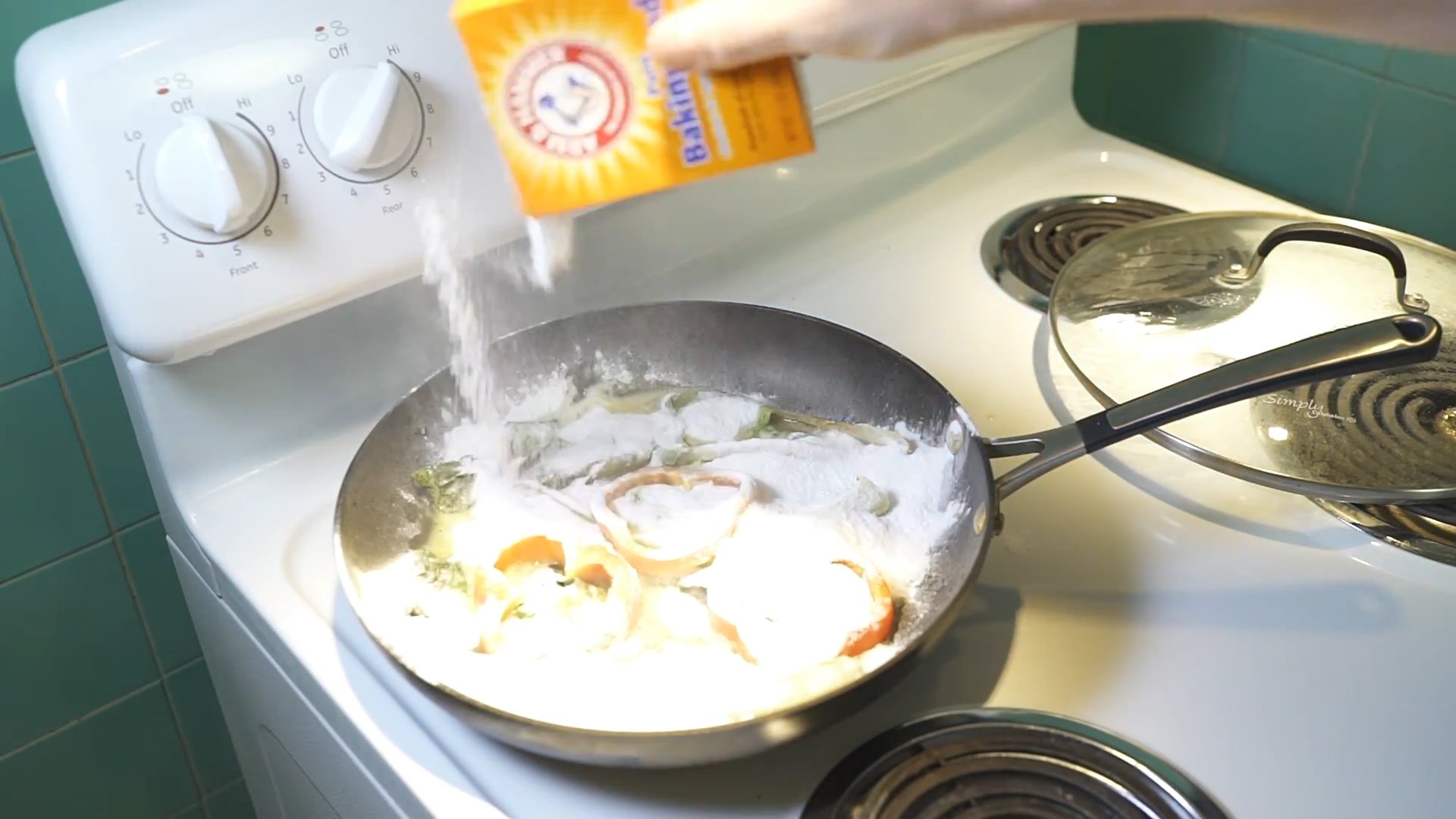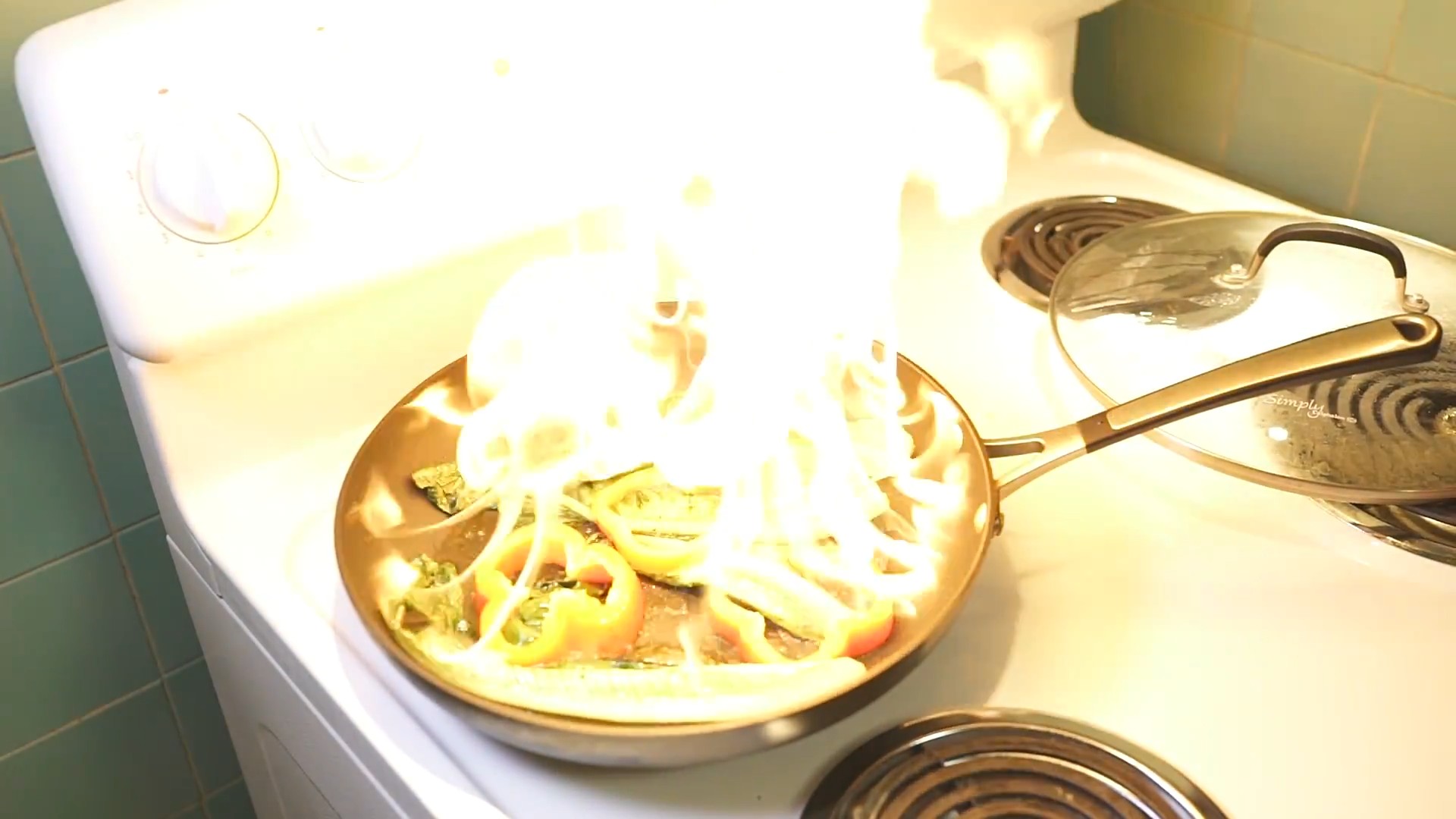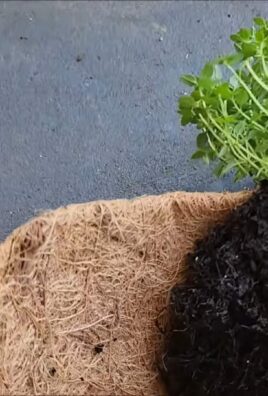Baking Soda Uses and Solutions: Unlock the magic of this everyday pantry staple and transform your home and garden! Have you ever wondered if there was a single, inexpensive product that could tackle everything from cleaning stubborn stains to boosting your plant growth? Well, wonder no more! Baking soda, also known as sodium bicarbonate, has been a household hero for generations, with its roots tracing back to ancient Egypt where it was used as a cleaning agent.
But its versatility extends far beyond just scrubbing sinks. In this article, I’m going to share some amazing DIY tricks and hacks that will revolutionize how you use baking soda, especially when it comes to your garden. From naturally pest control to balancing soil pH, baking soda uses and solutions are surprisingly effective and eco-friendly.
Why do you need these tricks? Because gardening can be challenging! Pests, diseases, and nutrient deficiencies can quickly derail your efforts. Instead of reaching for harsh chemicals, I’ll show you how to harness the power of baking soda to create a thriving, healthy garden. Get ready to discover the secrets to a greener, more vibrant outdoor space, all thanks to the humble baking soda!

Unlocking the Magic of Baking Soda: Your Ultimate DIY Guide
Hey there, fellow DIY enthusiasts! Get ready to be amazed by the sheer versatility of baking soda. This unassuming white powder is a powerhouse of possibilities, far beyond just baking delicious treats. I’m going to walk you through some incredible DIY hacks using baking soda that will simplify your life, save you money, and maybe even impress your friends!
Cleaning Powerhouse: Baking Soda to the Rescue!
Baking soda is a fantastic natural cleaner, and I’ve got some tried-and-true methods to share.
Freshening Up Your Fridge
Tired of that lingering odor in your refrigerator? Baking soda is your answer!
1. Prepare the Solution: Grab a small, open container (like a ramekin or a small bowl). Pour about half a cup of baking soda into the container.
2. Placement is Key: Place the open container of baking soda in the back of your refrigerator. This allows it to absorb odors effectively.
3. Patience is a Virtue: Let the baking soda sit in your fridge for at least 24 hours, but ideally for a week or even a month. Replace it monthly for continuous freshness.
4. Bonus Tip: For extra stubborn odors, sprinkle a thin layer of baking soda on a plate and leave it in the fridge overnight.
Deodorizing Your Carpets
Say goodbye to smelly carpets with this simple trick!
1. Gather Your Supplies: You’ll need baking soda, a shaker (like an old spice container with holes), and a vacuum cleaner.
2. Prepare the Carpet: Make sure your carpet is dry. If it’s damp, let it air dry completely before proceeding.
3. Sprinkle Generously: Fill your shaker with baking soda and sprinkle it evenly over the entire carpet surface. Don’t be shy!
4. Let it Sit: Allow the baking soda to sit on the carpet for at least 15 minutes, but for really stubborn odors, leave it on for a few hours or even overnight.
5. Vacuum Thoroughly: Vacuum up all the baking soda. You might need to go over the area a few times to ensure you’ve removed it all.
6. Enjoy the Freshness: Breathe in the fresh, clean scent!
Cleaning Your Oven
Oven cleaning can be a dreaded chore, but baking soda makes it much easier.
1. Empty the Oven: Remove all racks and any loose debris from your oven.
2. Make a Paste: In a bowl, mix half a cup of baking soda with a few tablespoons of water to form a thick paste.
3. Coat the Oven: Spread the baking soda paste all over the interior surfaces of your oven, avoiding the heating elements.
4. Let it Sit Overnight: This is crucial! Let the paste sit overnight (at least 12 hours) to loosen the grime.
5. Scrub and Wipe: The next day, use a damp sponge or cloth to scrub away the baking soda paste. You might need to use a little elbow grease for stubborn spots.
6. Rinse Thoroughly: Rinse the oven with clean water to remove any remaining baking soda residue.
7. Replace the Racks: Put the oven racks back in place.
8. Optional: For a final touch, you can turn on your oven to a low temperature (around 200°F) for about 15-20 minutes to dry it completely.
Unclogging Drains
Baking soda and vinegar are a dynamic duo for unclogging drains.
1. Pour Baking Soda: Pour about one cup of baking soda down the clogged drain.
2. Add Vinegar: Follow with one cup of white vinegar.
3. Let it Fizz: The mixture will fizz and bubble. Let it sit for about 30 minutes.
4. Flush with Hot Water: After 30 minutes, flush the drain with boiling water.
5. Repeat if Necessary: If the drain is still clogged, repeat the process.
Beauty Boost: Baking Soda for Your Skin and Hair
Baking soda isn’t just for cleaning; it can also work wonders for your beauty routine!
Exfoliating Facial Scrub
This gentle scrub will leave your skin feeling smooth and refreshed.
1. Mix the Ingredients: In a small bowl, mix one teaspoon of baking soda with a few drops of water to form a paste.
2. Apply Gently: Gently massage the paste onto your face in circular motions, avoiding the delicate eye area.
3. Rinse Thoroughly: Rinse your face with warm water and pat dry.
4. Moisturize: Follow with your favorite moisturizer.
5. Important Note: Don’t use this scrub more than once or twice a week, as baking soda can be drying.
Natural Deodorant
Baking soda can help neutralize body odor.
1. Mix with Water: Mix a small amount of baking soda with a little water to form a paste.
2. Apply to Underarms: Apply the paste to your clean, dry underarms.
3. Let it Dry: Allow the paste to dry completely before getting dressed.
4. Alternative Method: You can also simply dust a small amount of dry baking soda directly onto your underarms.
5. Caution: Some people may experience skin irritation from baking soda. If you notice any redness or itching, discontinue use.
Hair Clarifying Treatment
Remove product buildup and leave your hair feeling clean and shiny.
1. Mix with Shampoo: Add one teaspoon of baking soda to your regular shampoo.
2. Wash Your Hair: Wash your hair as usual, massaging the mixture into your scalp.
3. Rinse Thoroughly: Rinse your hair thoroughly with water.
4. Condition: Follow with your regular conditioner.
5. Frequency: Use this treatment only once or twice a month to avoid drying out your hair.
Household Hacks: Baking Soda for Everyday Problems
Baking soda can solve a variety of everyday household problems.
Polishing Silverware
Bring back the shine to your tarnished silverware.
1. Line a Dish: Line a glass baking dish with aluminum foil, shiny side up.
2. Add Baking Soda and Water: Add one tablespoon of baking soda and one tablespoon of salt to the dish.
3. Pour in Boiling Water: Pour in enough boiling water to cover the silverware.
4. Submerge Silverware: Place the silverware in the dish, making sure it touches the aluminum foil.
5. Let it Sit: Let the silverware sit in the solution for a few minutes. You should see the tarnish start to disappear.
6. Rinse and Dry: Remove the silverware from the dish, rinse it with water, and dry it thoroughly with a soft cloth.
Freshening Up Shoes
Get rid of stinky shoe odors.
1. Sprinkle Baking Soda: Sprinkle a generous amount of baking soda inside each shoe.
2. Let it Sit Overnight: Let the baking soda sit in the shoes overnight to absorb the odors.
3. Shake it Out: The next day, shake out the baking soda.
4. Repeat if Necessary: If the odor persists, repeat the process.
Soothing Bug Bites
Relieve the itch and irritation of bug bites.
1. Make a Paste: Mix a small amount of baking soda with a little water to form a paste.
2. Apply to Bite: Apply the paste to the bug bite.
3. Let it Dry: Let the paste dry completely.
4. Rinse Off: Rinse off the paste with water.
5. Repeat as Needed: Repeat the process as needed to relieve itching.
Testing Soil pH
For the gardeners out there, baking soda can help you test your soil’s pH.
1. Collect Soil Sample: Collect a small sample of soil from your garden.
2. Add Water: Place the soil in a container and add enough water to make a muddy mixture.
3. Add Baking Soda: Sprinkle a small amount of baking soda onto the soil mixture.
4. Observe: If the mixture fizzes, your soil is acidic.
5. Important Note: This is a basic test and doesn’t provide precise pH readings. For more accurate results, use a soil pH testing kit.
Baking Soda in the Kitchen: Beyond Baking
Of course, baking soda is a staple in baking, but it has other uses in the kitchen too!
Making Fluffier Omelets
Add a pinch of baking soda to your omelet mixture for a lighter, fluffier texture.
1. Prepare O

Conclusion
So, there you have it! Unlocking the power of baking soda goes far beyond just leavening your cakes. This humble ingredient, often relegated to the back of the pantry, is a veritable Swiss Army knife for your home, offering a multitude of solutions for cleaning, deodorizing, and even personal care. We’ve explored just a fraction of the incredible uses of baking soda, demonstrating its versatility and cost-effectiveness.
Why is this DIY approach a must-try? Simply put, it’s about taking control. You’re reducing your reliance on harsh chemicals, saving money, and embracing a more sustainable lifestyle. Commercial cleaning products often contain ingredients that are harmful to both your health and the environment. By harnessing the natural cleaning and deodorizing properties of baking soda, you’re making a conscious choice to protect yourself and the planet. Plus, the satisfaction of creating your own effective solutions is incredibly rewarding.
Consider the possibilities! For a refreshing carpet deodorizer, mix baking soda with a few drops of your favorite essential oil, like lavender or eucalyptus. For a more powerful drain cleaner, follow the baking soda and vinegar method with a pot of boiling water. And for a gentle facial scrub, combine baking soda with a little water or honey. The variations are endless, limited only by your imagination.
We’ve shown you how to make a simple yet effective baking soda paste for cleaning stubborn stains, a refreshing deodorizer for your refrigerator, and even a natural remedy for heartburn. These are just starting points. Experiment with different combinations and ratios to find what works best for you and your specific needs.
Don’t be intimidated by the “DIY” label. Working with baking soda is incredibly easy and safe. Most of these solutions require just a few simple ingredients and minimal effort. The results, however, are often remarkable. You’ll be amazed at the cleaning power of this unassuming powder.
We wholeheartedly encourage you to try these baking soda solutions. Start with one or two that pique your interest and see for yourself the incredible benefits. Embrace the simplicity, the cost-effectiveness, and the peace of mind that comes with using natural, non-toxic alternatives.
And most importantly, we want to hear about your experiences! Share your successes, your failures, and your own unique baking soda creations in the comments below. Let’s build a community of baking soda enthusiasts, sharing tips and tricks to unlock the full potential of this amazing ingredient. Let us know how you are using **baking soda** in your everyday life!
Frequently Asked Questions (FAQ)
Is baking soda the same as baking powder?
No, baking soda and baking powder are not the same. While both are leavening agents used in baking, they have different chemical compositions and work in different ways. Baking soda (sodium bicarbonate) requires an acidic ingredient, such as vinegar, lemon juice, or buttermilk, to activate its leavening power. Baking powder, on the other hand, contains both an acid and a base, so it doesn’t need an additional acidic ingredient to work. Substituting one for the other can significantly affect the outcome of your recipe.
Is baking soda safe to use on all surfaces?
While baking soda is generally safe and gentle, it’s always a good idea to test it on an inconspicuous area first, especially on delicate surfaces like polished wood or certain types of fabric. Avoid using baking soda on aluminum, as it can cause discoloration. For surfaces like marble or granite, use baking soda sparingly and with caution, as it can potentially scratch the surface over time. When in doubt, consult the manufacturer’s instructions for cleaning specific materials.
Can I use baking soda to clean my oven?
Yes, baking soda is an excellent natural oven cleaner. To clean your oven with baking soda, make a paste of baking soda and water and spread it all over the interior surfaces, avoiding the heating elements. Let the paste sit overnight. The next day, wipe away the paste with a damp cloth. For stubborn stains, you can use a scraper or a sponge with a slightly abrasive surface. Finally, rinse the oven thoroughly with clean water.
How can I use baking soda to get rid of bad smells in my refrigerator?
Baking soda is a highly effective odor absorber. To deodorize your refrigerator, simply place an open box or container of baking soda on a shelf. The baking soda will absorb unpleasant odors, leaving your refrigerator smelling fresh and clean. Replace the baking soda every month or two for optimal results. You can also sprinkle baking soda on spills to absorb the liquid and prevent odors from developing.
Is it safe to ingest baking soda?
Baking soda can be ingested in small amounts to relieve occasional heartburn or indigestion. However, it’s important to use it sparingly and follow the recommended dosage. Excessive consumption of baking soda can lead to side effects such as gas, bloating, and electrolyte imbalances. People with certain medical conditions, such as high blood pressure or kidney problems, should consult with their doctor before using baking soda internally. It is not a substitute for medical advice.
Can baking soda whiten my teeth?
Baking soda has mild abrasive properties that can help remove surface stains from teeth, making them appear whiter. However, it’s important to use it with caution, as excessive use can erode tooth enamel. Limit your use of baking soda for teeth whitening to once or twice a week, and always brush gently. You can mix baking soda with water to form a paste or add it to your regular toothpaste.
How long does baking soda last?
Unopened baking soda has an indefinite shelf life. However, once opened, it’s best to use it within six months to a year for optimal leavening power. To test the potency of your baking soda, add a teaspoon of baking soda to a small amount of vinegar. If it fizzes vigorously, it’s still good to use. If it doesn’t fizz, it’s time to replace it. Even if it loses its leavening power, you can still use it for cleaning and deodorizing purposes.
Can I use baking soda to unclog my drains?
Yes, baking soda is a great natural alternative to chemical drain cleaners. Pour about a cup of baking soda down the drain, followed by a cup of vinegar. Let the mixture fizz for about 30 minutes, then flush the drain with hot water. For stubborn clogs, you can repeat the process or use a plunger to help dislodge the blockage.
What are some other uses for baking soda in the garden?
Baking soda has several uses in the garden. It can be used to sweeten tomatoes, prevent powdery mildew, and test soil pH. To sweeten tomatoes, sprinkle a small amount of baking soda around the base of the plants. To prevent powdery mildew, mix baking soda with water and spray it on the affected plants. To test soil pH, mix baking soda with water and add a small amount of soil. If it fizzes, the soil is acidic.
Is baking soda environmentally friendly?
Yes, baking soda is considered an environmentally friendly cleaning and deodorizing agent. It is a natural substance that is non-toxic and biodegradable. Using baking soda instead of harsh chemical cleaners can help reduce your environmental impact and create a healthier home.




Leave a Comment